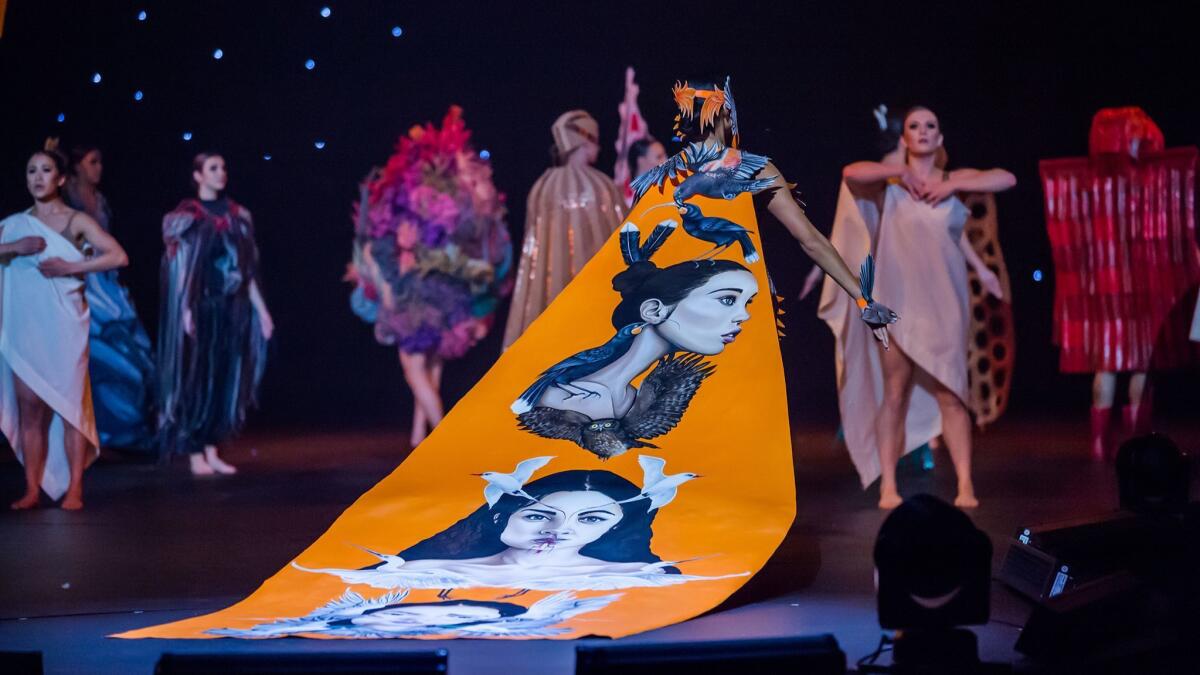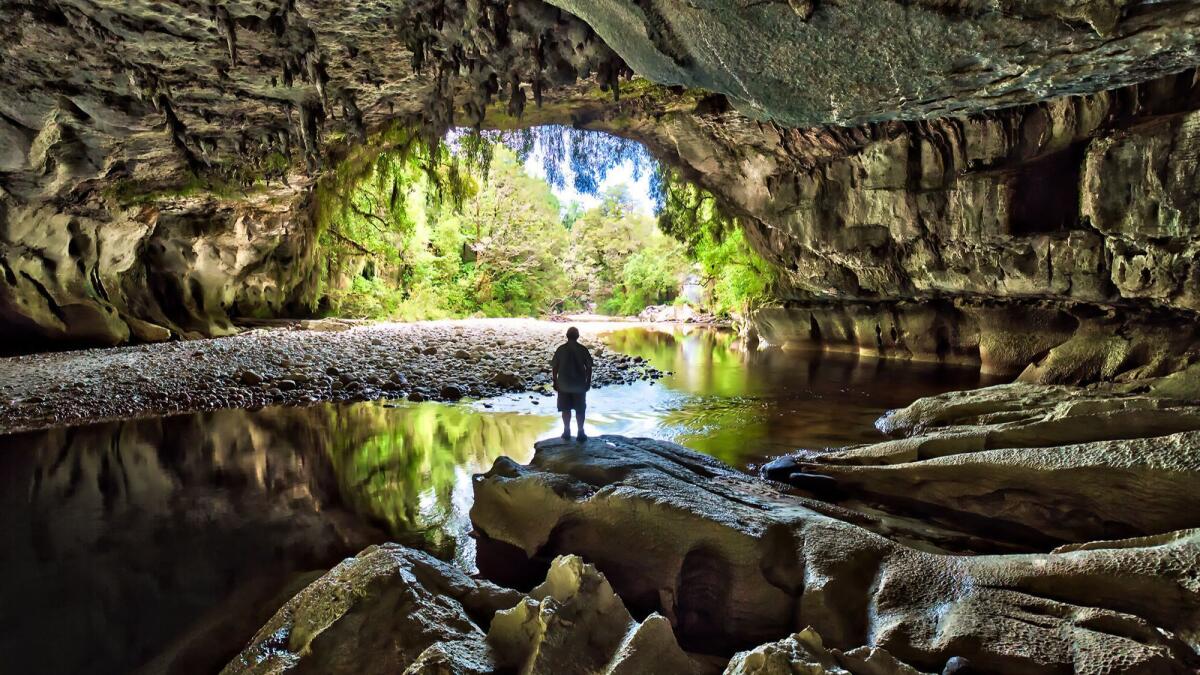The art of vacationing in New Zealand in the off-season
- Share via
The idea, Suzie Moncrieff said, was to “take art off the wall and on to the human body.”
From Moncrieff’s concept, WOW — World of WearableArt — evolved into a show that was staged in 1987 in the bohemian town of Nelson, New Zealand. By 2005, it was so successful that it moved to the North Island and the largest theater in Wellington, the capital, where more than 60,000 people attended during its three-week run.
Couple that amazing show with its timing in New Zealand’s off-season — Sept. 27 through Oct. 14 this year, when the weather tends to be iffier but flights and hotels are cheaper — and I had ample incentive to go.
If there remained any doubt about whether I should, my mother provided it: It was her dream to see the show.
Done.
I flew from the U.S., stopped in Auckland where my mother lives, and together we flew an hour to Wellington, where we checked into the QT Hotel (doubles from $210), known for its bleeding-edge modern art collection.
It’s so bleeding edge that the hotel is allowing 19 artists to create murals, paint, spray paint and put photos on the walls of 25 rooms. To be considered, artists must submit their work, and if they’re chosen, they are let loose. Between that and the millions of dollars’ worth of modern art hanging and sitting in seemingly every public space, and the hotel is a must-see, even if it’s just for a glass of wine.
After dinner at QT’s lavish Hippopotamus, the hotel’s neo-Baroque, French-meets-Kiwi restaurant, we walked the half-mile to WOW.

There was a hum of exhilaration as the lights dimmed and dancers and models sprang onto the stage. Imagine Paris Fashion Week meets Cirque du Soleil and Burning Man.
One latex costume required a vacuum to get the model into it. Another was made of a used America’s Cup sail re-created into a sumptuous Maori princess gown and cloak.
One black creation that evoked a come-hither sea creature was made from recycled earphone pads, another was constructed of ultraviolet illuminated drinking straws, and yet another, an otherworldly butterfly getup, was fashioned from pill capsules, canvas, metal and resin.
One of my favorites was a tutu made from used fencing wire, cotton waste and old CDs. It’s as though artists are told to make what they see in their dreams, but be mindful that a model has to be able to navigate a catwalk.
With every new category — science fiction, avant-garde or bedazzled — the costumes were, as the program promised, “Extravagant. Unabashed. Unafraid. Beautiful.”

The show left us thinking had it been in New York, Las Vegas or Paris instead of in the world’s nether regions, where there would be a wait list and ticket prices in the thousands.
Still on a high from the inspiration and innovation we witnessed the night before, the next morning we took a guided walking culinary tour of Wellington with Zest, which took us to a coffee roasting company, a gelato shop and a gourmet chocolate factory before finishing at Logan-Brown, one of New Zealand’s finest restaurants.
We wanted to explore the original home of WOW, so the next day we flew 45 minutes to Nelson, its original home. We had arranged to see the WOW Museum, which displays some of the best works from past shows, then head into the bush for a taste of real New Zealand backcountry.
Nelson is a sweet seaside town on the northern end of the South Island, known for its artists, its produce and its wines. We ate fish at the Boat Shed Cafe, perched over the water, then toured the fabulous museum where you can see up close the mind-boggling work that goes into the creations.

We headed into the countryside and stayed at the Resurgence, an eco-lodge that sits on 50 acres of idyllic native bush. (Cottages from $420 a night.)
The ecolodge, near the iconic Abel-Tasman National Park and Kahurangi National Park is surrounded by greenery and filled with birdsong. It rained at times, as it often does in the bush, so we sat by the fire and read in our cozy standalone cabin.
Our days were filled with hikes, visiting nearby towns, utter relaxation in nature and meals cooked by co-owner Clare Carteret-Bisson followed by baths in our bathhouse with sides that opened to foliage.
The views were landscape art at its finest, perhaps not wearable but definitely picture perfect.
Sign up for The Wild
We’ll help you find the best places to hike, bike and run, as well as the perfect silent spots for meditation and yoga.
You may occasionally receive promotional content from the Los Angeles Times.



